Hisense E8Q is a television that clearly draws heavily from the U7Q model – and that’s a great thing. After all, this is its European version, not another “slimmed down” mutation. After just a few moments with this screen, it’s clear that the E8Q is putting up a fight. And in many areas, it really succeeds. To start with – what impresses is that the blacks are deep, the contrast is high, and the brightness exceeds the threshold that we can simply call satisfactory. Add to that nearly perfect fluidity of tonal transitions, and we have an image that looks very mature, especially for this price segment. In gaming? Just as good. VRR, ALLM support, 144 Hz in 4K, and even 240 Hz in Full HD – it’s hard to find fault here. Well… almost. Because the E8Q has one additional flaw compared to the U7Q – the sound. In our unit, at moderate volume levels, the back of the cabinet began to resonate, producing rather unpleasant crackling noises. This might be a flaw of the test unit, but since the U7Q simply performed better – it’s worth noting. Especially if you find both models at a similar price. We can confidently state that the E8Q is a television that can confidently fight for the attention of those looking for a quality Mini-LED at reasonable prices. If a good price opportunity arises, it’s definitely worth it – because we receive almost the same as in the U7Q. And that means a really solid picture, excellent gaming features, and overall very good equipment that you can stick with for a while.
- Matching (Score)
- Our verdict
- TV appearance
- Where to buy
- Contrast and black detail
- HDR effect quality
- Factory color reproduction
- Color reproduction after calibration
- Smoothness of tonal transitions
- Image scaling and smoothness of tonal transitions
- Blur and motion smoothness
- Console compatibility and gaming features
- Input lag
- Compatibility with PC
- Viewing angles
- TV efficiency during daytime
- Details about the matrix
- TV features
- Apps
- Playing files from USB
- Sound
Hisense E8Q vs Philips OLED770
Direct compare
E8Q
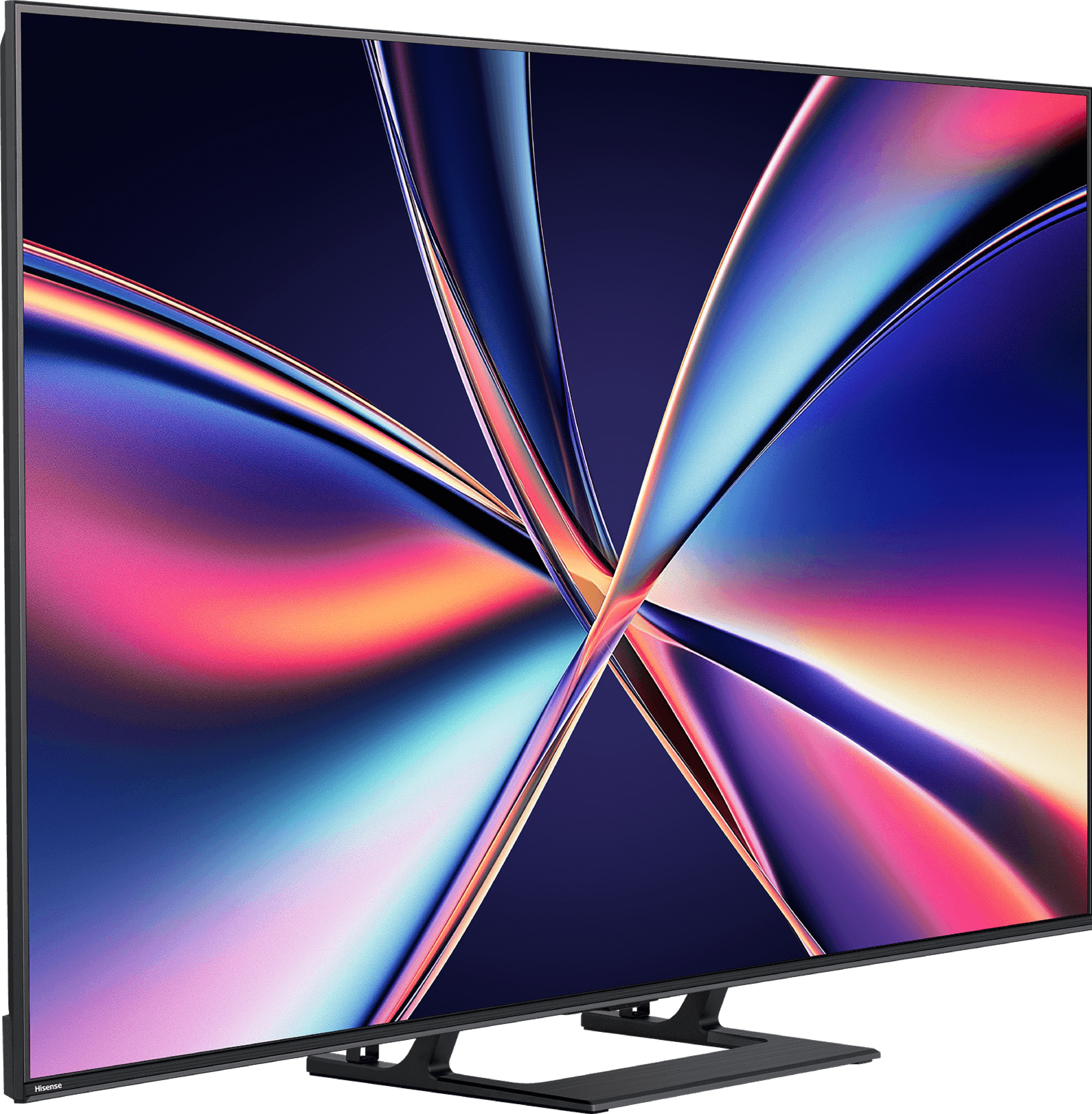

Panel type: LCD VA
Resolution: 3840x2160
System: VIDAA
Model year: 2025
Complete the survey to find out the result

Panel type: WRGB OLED
Resolution: 3840x2160
System: Titan OS
Model year: 2025
Complete the survey to find out the result

Overall rating
7.2
7.5
Movies and series in UHD quality
6.7
8.0
Classic TV, YouTube
6.8
8.6
Sports broadcasts (TV and apps)
6.5
8.4
Gaming on console
8.0
9.2
TV as a computer monitor
8.6
7.6
Watching in bright light
6.2
4.8
Utility functions
8.9
5.5
Apps
7.7
6.7
Sound quality
7.2
7.0
Complete the survey to find out what fits your preferences
Advantages
Great contrast and deep blacks
Very good smoothness of tonal transitions (close to reference level)
High brightness
Supports 4K 144 Hz and even 240 Hz in Full HD
VRR, ALLM, G-SYNC – a full package for gamers
Low input lag
Many classic TV features built into the VIDAA system
Excellent image quality typical of OLED – perfect blacks, infinite contrast
AmblightTV system
Support for multiple HDR formats including Dolby Vision and HDR10+
Great image quality after calibration
Decent viewing angles
Excellent motion smoothness – 120Hz OLED panel!
Many features for gamers: VRR, ALLM, Dolby Vision Gaming
Low input lag
4 HDMI 2.1 ports!
Disadvantages
No support for HGiG (makes setting HDR on consoles difficult)
Poor viewing angles – typical for VA panels
Closed VIDAA system – lack of some applications
Inferior sound quality compared to the twin model U7Q
TitanOS has very few apps and has annoying bugs
The remote works on infrared
Not the best upscaling quality
Average reflection suppression – the screen behaves like a slightly dimmed mirror
Our verdict
Philips OLED770 is a television that stands out primarily for its picture quality – the characteristic perfect black and infinite contrast typical of OLEDs make even a regular evening of binge-watching a series feel like a small cinematic experience. After calibration, the colours gain naturalness and consistency, while details in dark scenes are separated from the lights with surgical precision. This is a screen that gives the feeling of engaging with premium-class technology, even though it is formally a budget OLED in Philips' portfolio. The second pillar on which the OLED770 stands very strong is gaming. Here, the manufacturer has really done their homework. VRR works up to 120 Hz, we have an automatic game mode (ALLM), and input lag in standard HDR10 or SDR modes at 120 Hz can drop to as low as 5 ms – these are results that will easily satisfy even the most demanding gamers. And finally, the Ambilight system – for many it’s a gadget, but during longer sessions, it truly makes a difference. The colourful LEDs behind the screen dynamically respond to what's happening in the game, and can pull you deeper into the virtual world. It’s precisely for this reason that one could risk saying that the OLED770 is one of the more interesting budget gaming TVs on the market.
However, not everything shines so brightly, because when we come to the Smart TV aspect… TitanOS is the biggest drawback of this model. Theoretically, we have everything we need: access to apps, AirPlay support, and voice commands. In practice, though, the list of apps is limited, screen mirroring often doesn’t work at all, and voice search does not support the Polish language. Moreover, the remote, although well-designed and backlit – operates on infrared, which sounds almost anachronistic in 2025. The system is purportedly fast, but it can irritate with errors, and instead of encouraging usage, at times, it rather urges us to turn it off. And here we reach the crux: the OLED770 is a television that performs excellently as a screen for movies and games, but not necessarily as a multimedia hub for the home. For someone who mainly uses a console, home cinema, or operator's decoder – it will be a solid choice. We get fantastic picture quality, a full set of modern gaming features, and of course, the proprietary AmbilightTV backlighting system! But if someone is looking for a television that has to replace everything and serve as a multimedia powerhouse, it would be better to look towards the more expensive Philips models that offer more refined system solutions like GoogleTV.
TV appearance
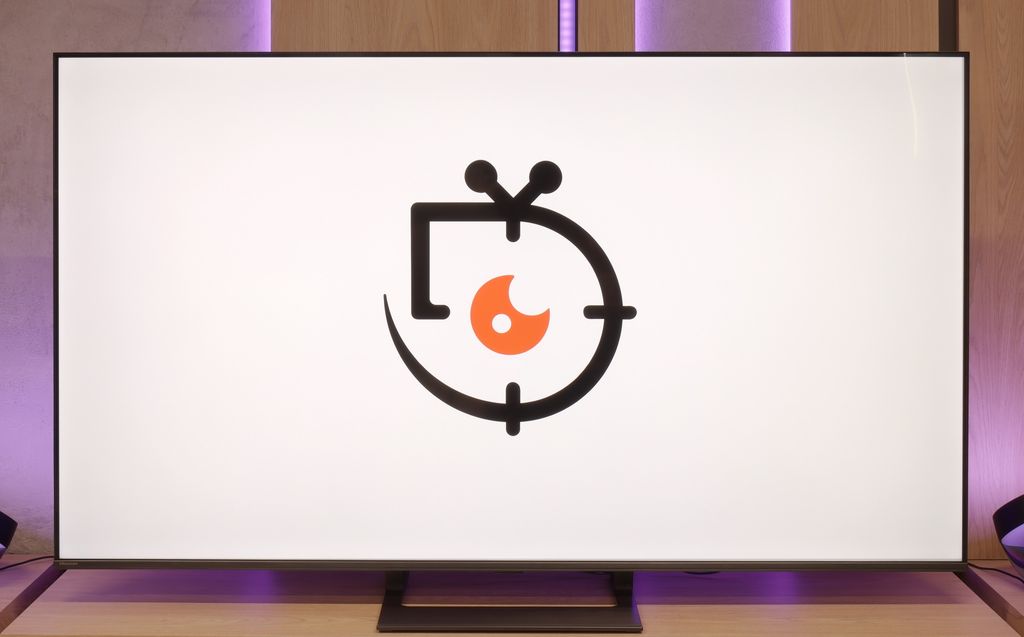
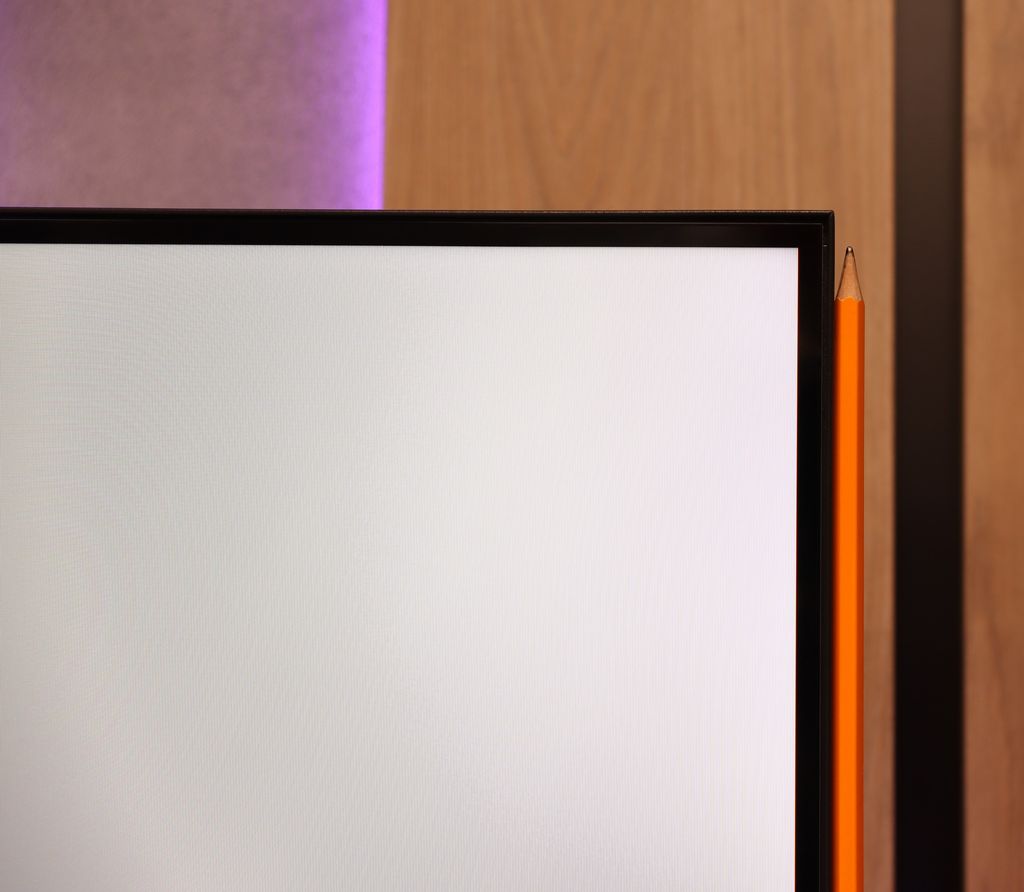
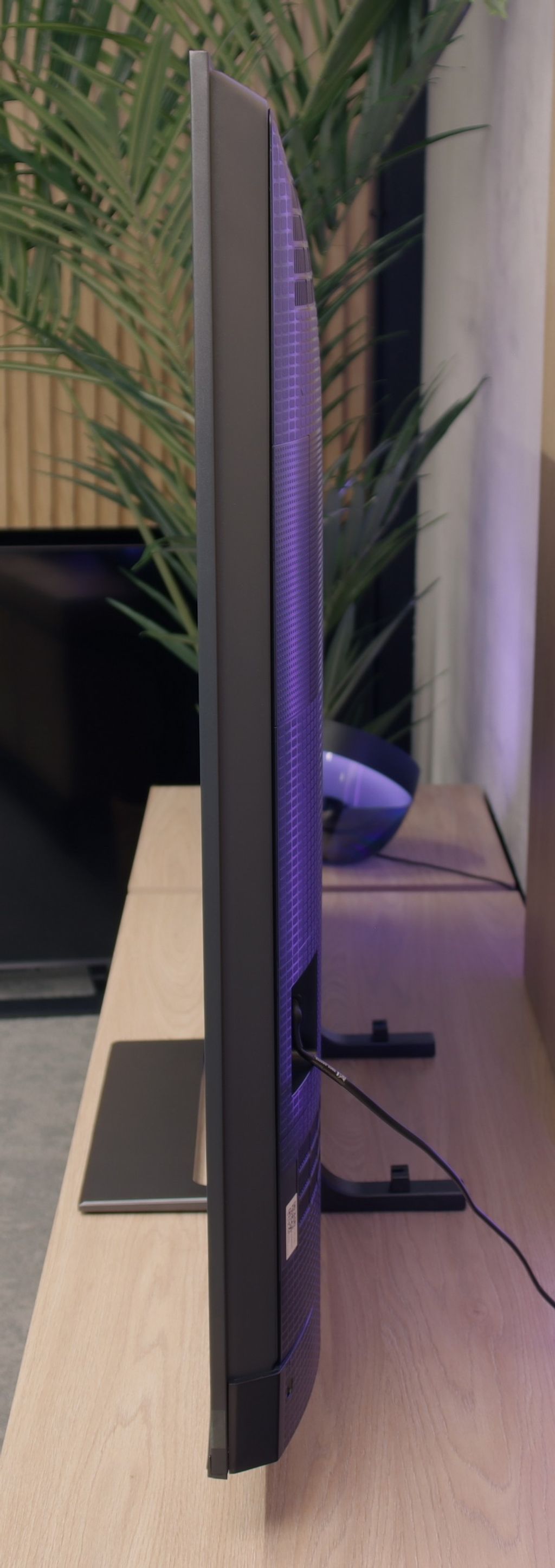
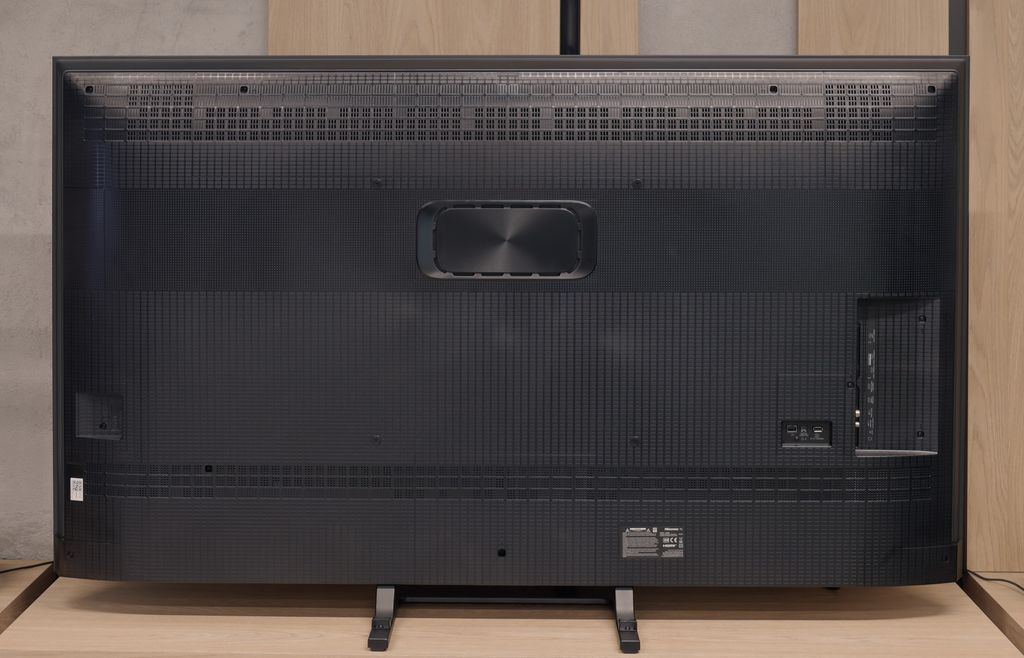




Contrast and black detail
7.6/10
10/10
Local dimming function: Yes, number of zones: 220 (10 x 22)
Contrast:

Result
277,000:1

Result
43,700:1

Result
15,750:1

Result
8,850:1

Result
6,350:1

Result
∞:1

Result
∞:1

Result
∞:1

Result
∞:1

Result
∞:1
Halo effect and black detail visibility:
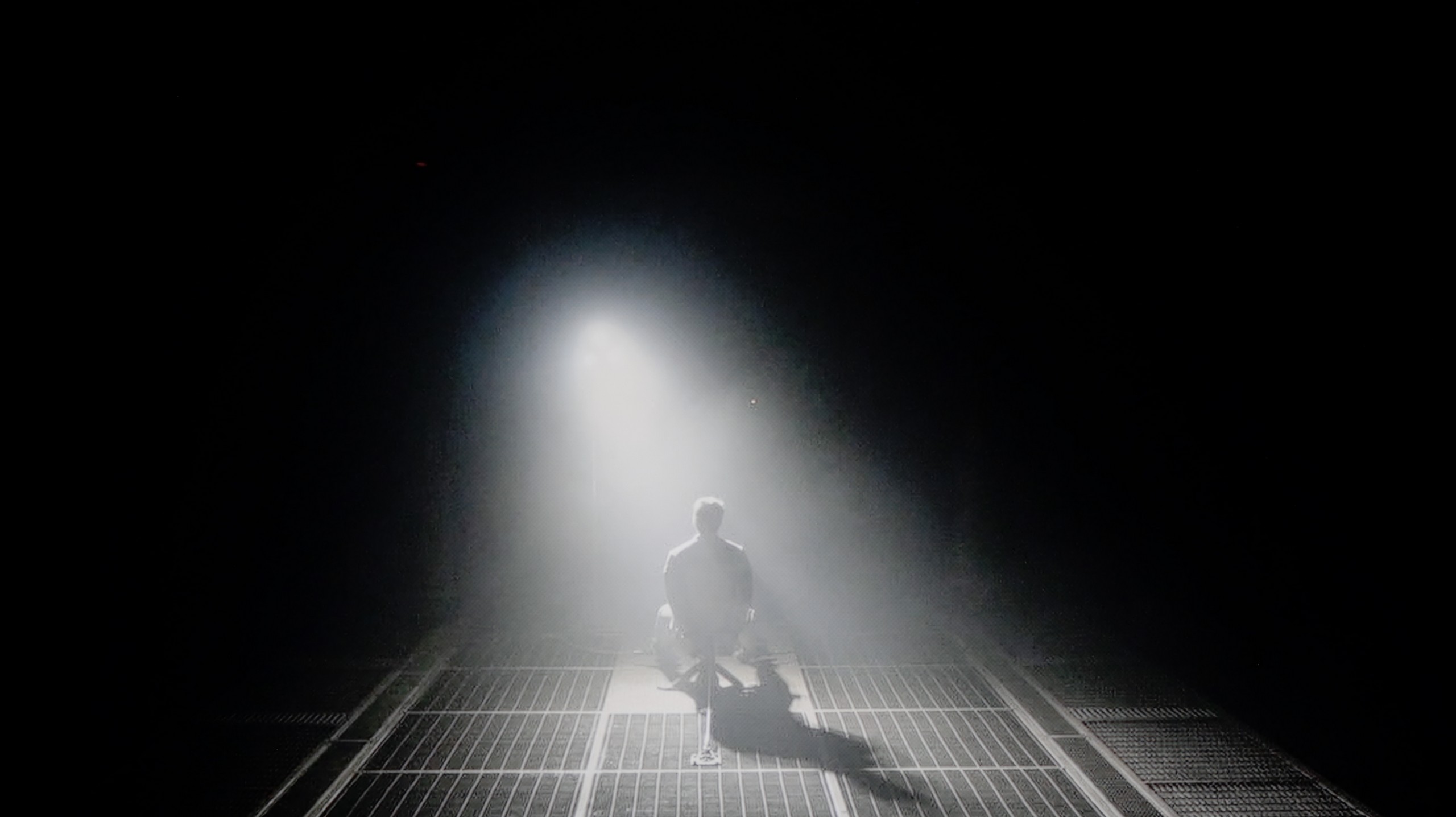

Similar to the U7Q, the E8Q model uses a VA panel and Mini-LED backlighting. The number of dimming zones also remains at a very similar level – in the 65-inch variant we tested, we counted 220 zones, which is exactly the same as in the U7Q. On paper, it looks really good for this price segment, and even better – in practice. The contrast is high, and the black can be really deep. In many scenes, the lights are clearly separated, and the image gains a sense of space. This is one of those cases where Mini-LED shows it can come close to OLED quality – of course, assuming we understand the limitations we have to consider. In very challenging scenes, there may be slight brightening or a minor halo effect around bright objects, but these are phenomena typical of this technology and are not very noticeable. Ultimately – the contrast and blacks in the E8Q are really solid, nearly identical to the U7Q model. It's hard to nitpick, especially when we look at the price of the television.
In terms of black and contrast, the Philips OLED770 doesn’t introduce any revolutions – but with OLEDs, it would be hard to expect one. The organic matrix allows for complete blacking out of individual pixels, which in practice gives us almost perfect black and contrast that reaches infinity. Whether we’re watching night scenes in films or scenes full of tiny bright points, the TV precisely separates details from the background. There are no halo effects or other artifacts typical for LCD TVs with local dimming here. Choosing an OLED – also in the version of model 770 – you can be assured that in this category, the image will look fantastic.
HDR effect quality
4.5/10
6/10
Luminance measurements in HDR:

Result
531 nit

Result
148 nit

Result
320 nit

Result
100 nit

Result
625 nit

Result
546 nit

Result
657 nit

Result
726 nit

Result
704 nit

Result
275 nit
Scene from the movie “Pan” (about 2800 nits)


Scene from the movie “Billy Lynn” (about 1100 nits)


Static HDR10


Dynamic: Dolby Vision
Dynamic: Dolby Vision


HDR luminance chart:
Philips OLED770
HDR luminance
Luminance of RGB colors
Hisense E8Q
HDR luminance
Since the E8Q is a twin of the U7Q, it’s no surprise that the HDR effect quality is almost identical. On paper, it looks promising – a peak brightness of 800 nits can impress in many scenes. Moments like light flashes in “The Meg” or shots of the sun in “Life of Pi” can indeed create a “wow” effect. But the longer we watch, the more we notice the limitations. The problem arises when small, bright details need to be shown against a dark background. In such situations, the dimming algorithms try to protect the contrast, but in the process, they also dim what should shine the brightest. Instead of dazzling details, we get almost invisible points of light. This is typical for Mini-LED in this price segment and is not surprising – but it’s worth knowing that the HDR effect will not always be fully preserved. Fortunately, the colour reproduction provides reasons to be pleased. A coverage of the DCI-P3 palette of about 94% is a very good result, and the quantum dot layer used (more precisely, PFS) does its job – colours are saturated and vibrant, especially with 4K content.
The Philips OLED770 doesn't try to compete with the brightest OLEDs on the market, and it's actually hard to expect that, as it's the entry-level model in Philips' range for 2025. In our measurements, it reached a maximum of around 700 nits, which allows for enjoyment of HDR effects in scenes where light appears in spots – for instance, in the flash of headlights or a starry sky. In such moments, the picture can truly amaze. However, it's different when there are more bright elements on the screen. The TV, like many cheaper OLEDs, restricts luminance at that point, and the entire image noticeably dims. This was best seen in a scene from the movie The Meg, where the sun rises behind an oil platform – the brightness dropped to around 250 nits, which is almost three times less. The HDR effect remains pleasing to the eye, but it's worth being aware that this model performs best in scenes with less intense light. Fortunately, the OLED770 also has an ace up its sleeve – the coverage of the DCI-P3 colour palette is as high as 99%, so colours in movies and games are vibrant and very close to what the creator intended.
Factory color reproduction
6.5/10
6.2/10


Factory Mode
After calibration


Factory Mode
After calibration
Testing the Hisense E8Q in Filmmaker mode, we were hoping for a potentially neutral picture resembling the director's vision. Unfortunately – although it doesn't look too bad on paper (the colour reproduction errors aren't significant), in practice the image feels somewhat unnatural. The reason? The blue colour is boosted too strongly and there is a deficiency of red in the white balance. The effect? Scenes appear cool, and the white seems slightly bluish. Alongside the U7Q model, we also noticed a specific approach to brightness management here. The brightness reproduction curve for HDR content (EOTF) shows that the TV can significantly dim small, bright elements on the screen to maintain contrast – but sometimes it goes too far. On the other hand, it can excessively brighten larger, very bright areas, which disrupts tonal balance. It's a compromise that may not suit everyone – especially if you want a potentially faithful picture straight out of the box.
The first measurements already show that the factory settings of the Philips OLED770 have a lot to improve, even in Filmmaker mode. The white balance chart clearly indicates a lack of blue, giving the image a slightly yellowish tint. In practice, white is not snow-like, but leans towards warmer hues – which some may even find appealing, but from a precision standpoint, this is a deviation from the norm. The gamma, on the other hand, tends to be on the darker side – the average value is around 2.6 instead of the reference 2.4. In mid-tones, the image appears muted and more saturated, which can look too "cinematic" but detracts a bit from the naturalness. However, the most significant issues are visible in colour reproduction. The average error is relatively high, and some colours – particularly shades of grey – deviate significantly from what should be seen. In everyday viewing, this means that sometimes colours may look less natural than we would wish.
Color reproduction after calibration
7.4/10
9/10




Calibration of the Movie mode yielded really good results, especially regarding SDR content. The white balance was successfully adjusted, giving the image a natural look – it appeared almost reference-level. The colours were well-saturated, and the overall experience of the content improved significantly. Unfortunately, when we switched to HDR materials, the familiar issues from the U7Q model returned. The TV still likes to "do its own thing," as seen from the analysis of the EOTF brightness characteristics – despite calibration, the E8Q still darkened small details in the shadows, while brighter parts of the screen were sometimes excessively boosted. In practice, this means that in darker scenes, some of the smallest details could simply disappear. Although it's worth noting that the entire calibration process brought a lot of good, not everything can be bypassed – even with the use of professional tools. The E8Q can impress with its picture, but in HDR content, its construction limitations become apparent, and it's worth keeping this in mind.
Philips OLED770 had shown signs from the start that it harboured significant potential, but it was hard to fully appreciate this in its factory settings. The image was often too warm, and some colours appeared as if they had lost their naturalness along the way. Calibration revealed that this television was very amenable to work – it responded to every adjustment and almost immediately unveiled another layer of its capabilities. The white balance was set in both SDR and HDR so that the yellowish haze disappeared and a neutral, clear white emerged. Gamma stabilised closer to perfection, which helped restore the naturalness of mid-tones, while shadows ceased to be artificially darkened, perhaps even with a slight brightening effect. The result was obvious... Movies are watched with greater ease; the image has cinematic depth without the feeling that something is overly darkened. However, the most interesting aspect was working on the colours. Factory errors were not dramatic, but slightly noticeable – skin tones could be too warm, and grey wasn’t always the shade we expected. After calibration, the error values dropped to around 2, and in many cases even below 1. This is a level that is definitely lower than the threshold of discernibility for the human eye. In other words, after correction, the colours finally “clicked” into place. Looking at the screen, we felt like the television had begun to speak with a full voice. Like an instrument that had finally been properly tuned.
Smoothness of tonal transitions
9.9/10
7.6/10












In this category, the Hisense E8Q really demonstrates its quality. The transitions between colours are very smooth, without any "steppings" or clear boundaries between tones. The image looks natural, and the colour gradation performs exceptionally well – even in more challenging scenes. If there are any minor imperfections, they are subtle enough not to be noticeable. It's hard to find fault here – it looks almost perfect.
In this category, there’s a noticeable improvement compared to last year's Philips models. The OLED770 handles colour gradation significantly better, and strongly visible transitions or artificial banding occur less frequently than before. Interestingly, we achieved the best results in dark scenes – where most televisions, especially those with WOLED panels, tend to struggle the most. A good example is the shot of an actor floating in red water – the transition from intense red to black looks nearly perfect here, without the typical “stair steps.” The situation is somewhat worse in light parts of the image. With extremely bright gradients, particularly close to white, the television has trouble maintaining smoothness. This can be noticed, for example, in a scene from the film Kingsman, where in the background of the bright sky with the sun, subtle bands of the sunrise appear instead of a smooth blur. Fortunately, these situations are relatively rare, and in everyday viewing, the OLED770 presents itself very solidly and doesn’t disrupt immersion as was the case in last year's models.
Image scaling and smoothness of tonal transitions
6/10
7/10
Smooth transition function
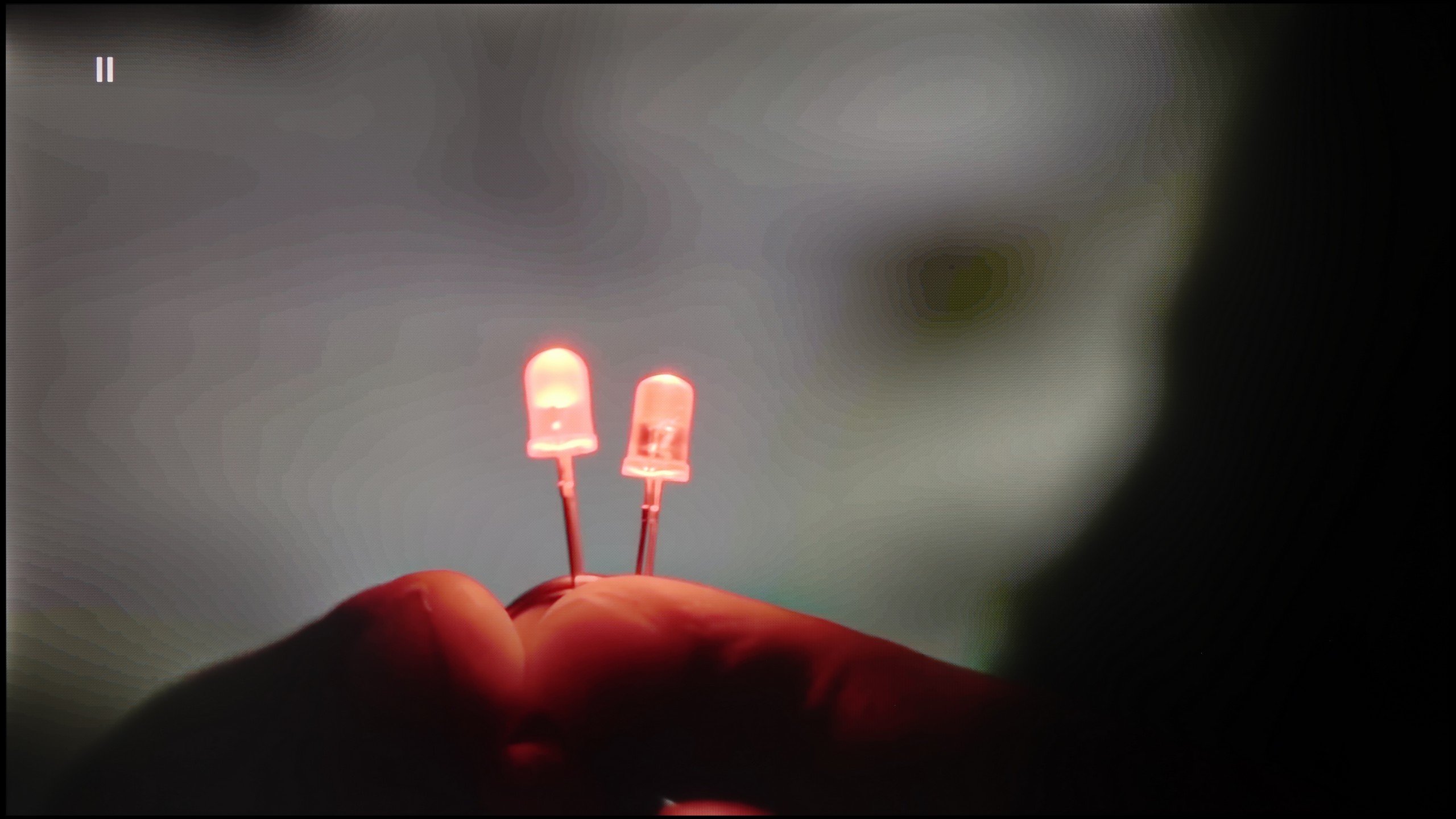

Image without overscan on the SD signal


In the case of older materials of lower quality, gentle smoothing of tonal transitions often comes in handy. The Hisense E8Q, like the U7Q, has a "Smooth and Gradient Picture" feature, but unfortunately, its effectiveness leaves much to be desired. The "Low" setting is nearly invisible in operation, while higher settings blur details instead of improving transitions. The good news is that the feature does not compromise film grain, which means it does not degrade the structure of the image. On the positive side, scaling is commendable. The TV can reasonably convert older content to a higher resolution – without artificially accentuating contours or excessive sharpening. Although it doesn't match the best models in this category, it performs quite well for its class.
The problem of the previously mentioned colour connections can largely be mitigated thanks to the "distortion reduction" function, which is an algorithm for smoothing tonal transitions in Philips. It works best at a low level – effectively eliminating unwanted colour bands while not introducing strange artifacts or losing image detail. This is one of those features that is truly worth keeping on.
The issue of upscaling is somewhat less impressive. Images from lower resolution can be too soft, while in some parts the characteristic "jaggies" appear. The impression is that the algorithm is trying to reconcile two contradictory directions – smoothing and sharpening – and ultimately fails to find the golden mean. As a consolation, it's worth noting that the television does not have problems with overscan, meaning it does not cut off the edges of the image, which can sometimes happen in other competing models.
Blur and motion smoothness
7.5/10
8.4/10


Blur (native resolution, maximum refresh rate):
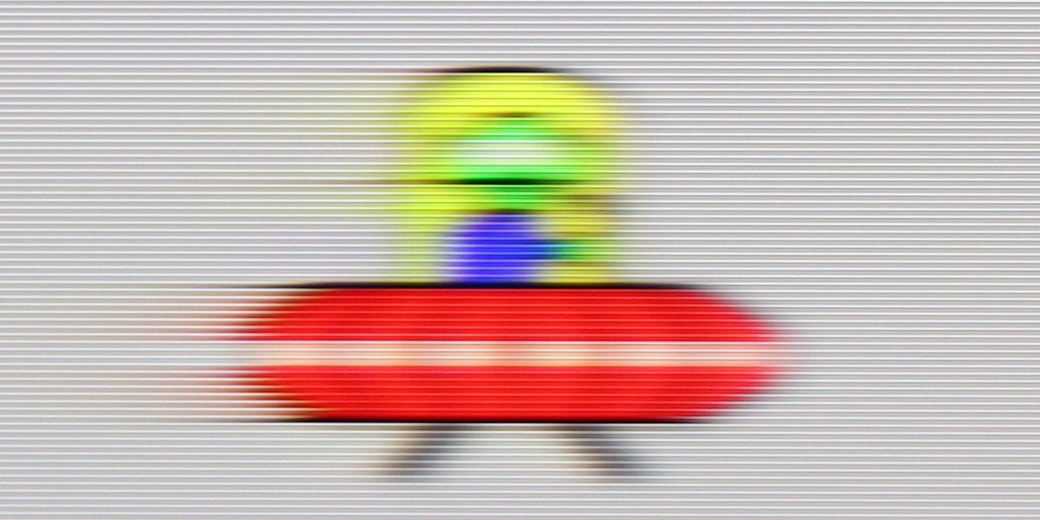
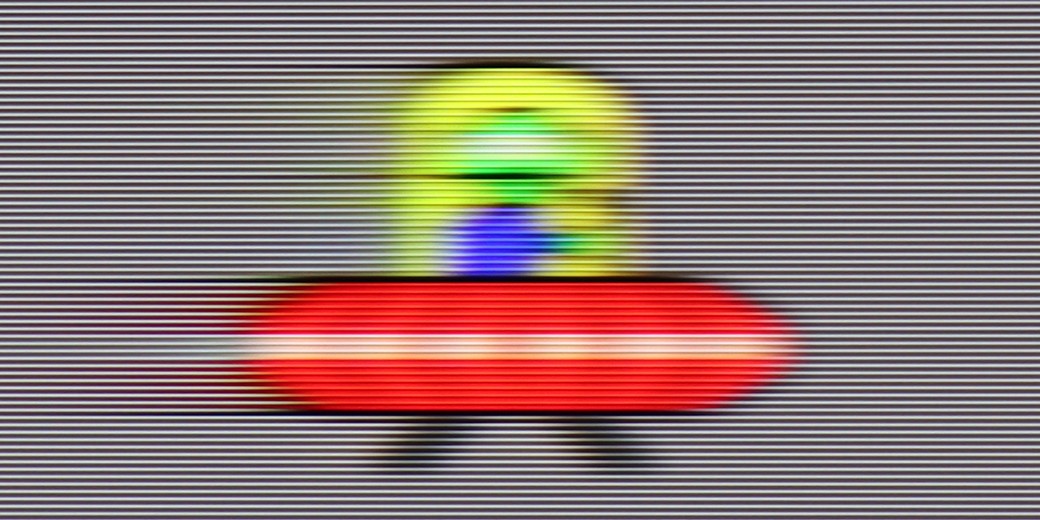
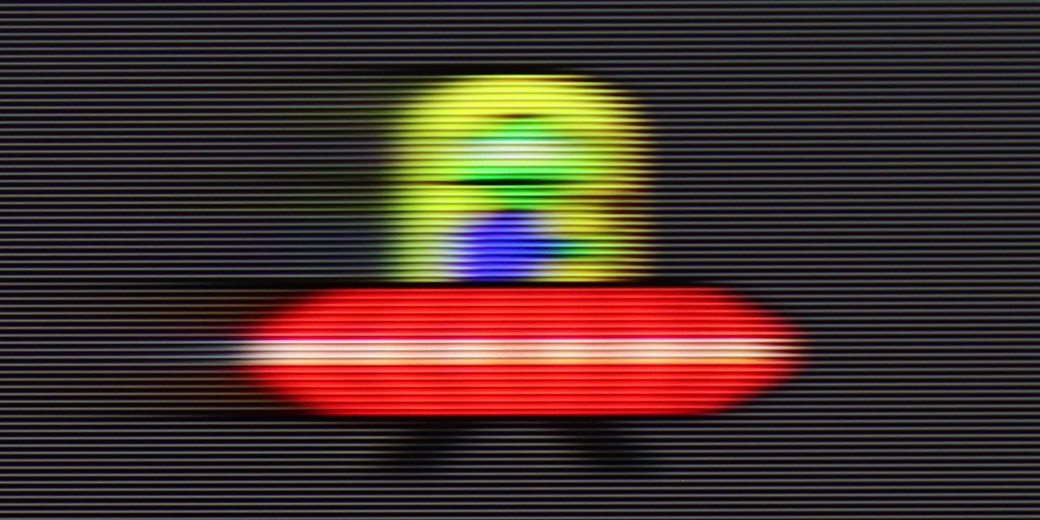



Blur (BFI function enabled):
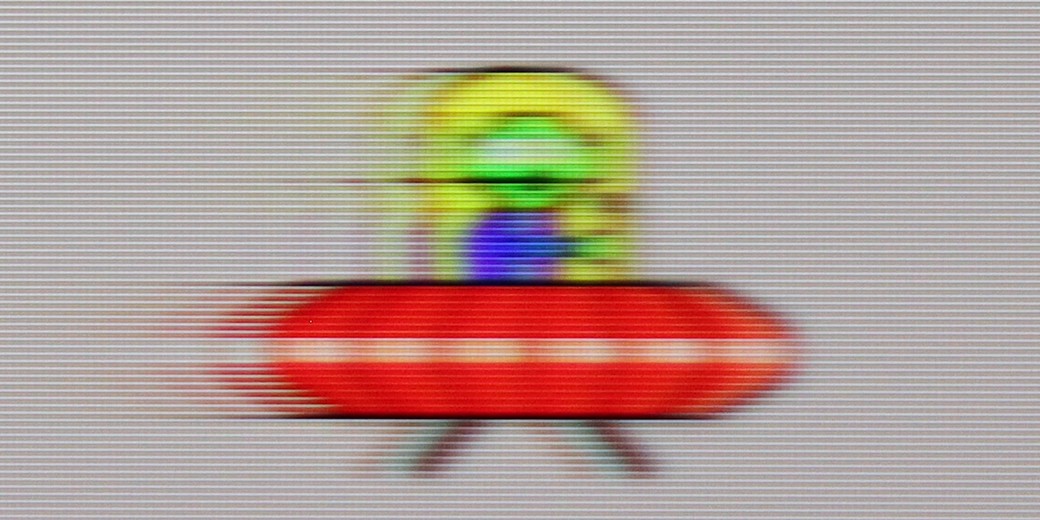


Smużenie (4K 120Hz):
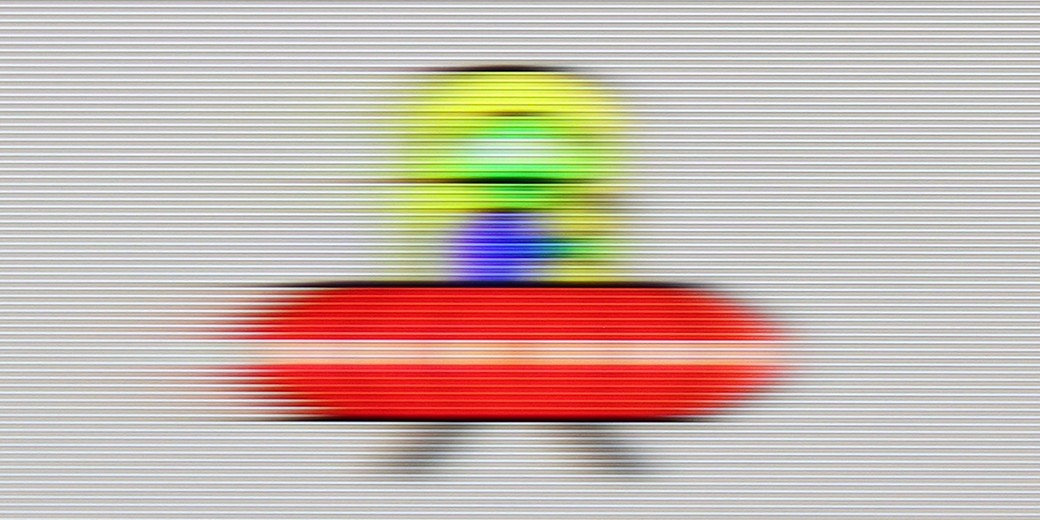
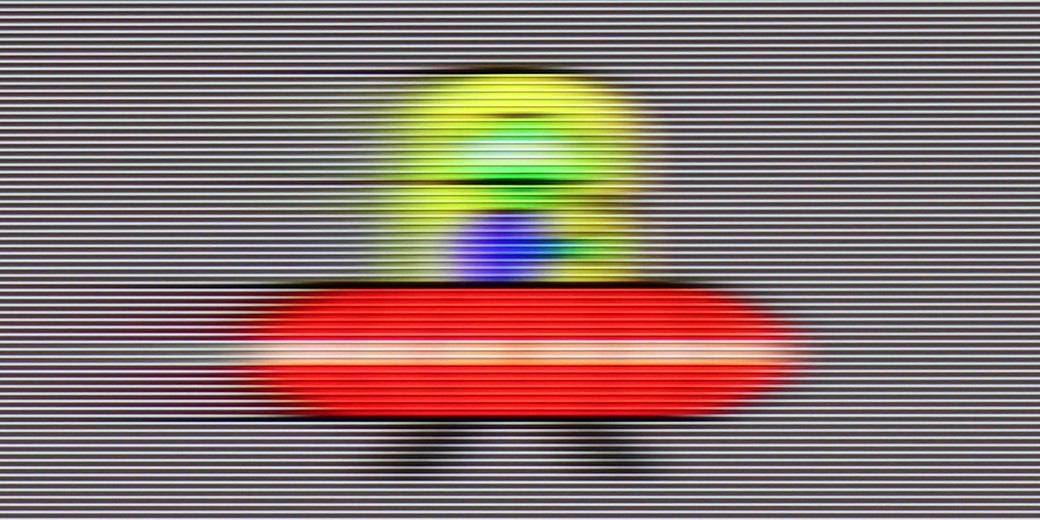
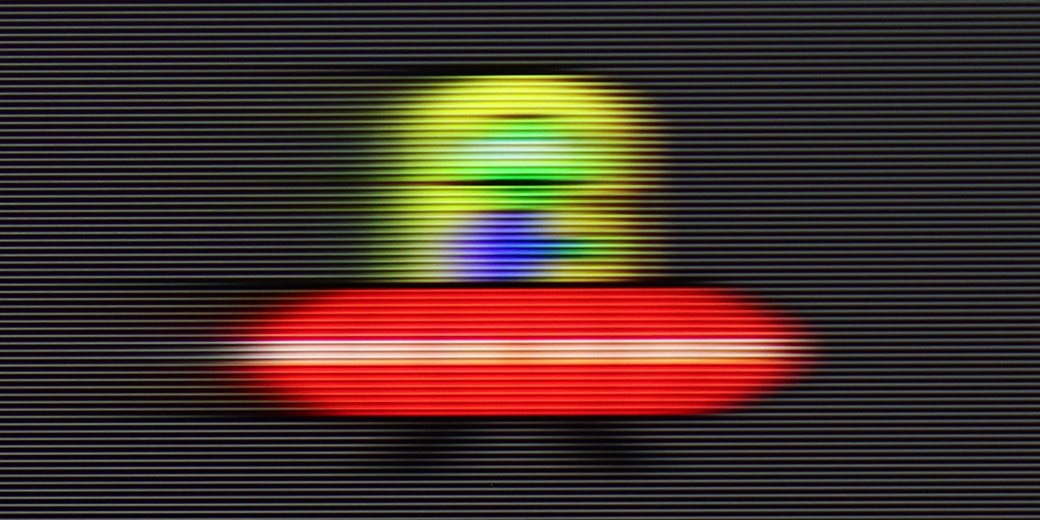
Smużenie (4K@144Hz):



Similar to the U7Q, the E8Q model is a fast television designed with dynamic content in mind. It supports a 144 Hz refresh rate at 4K resolution, and if for some reason someone is still gaming in Full HD – it can even reach 240 Hz. This is a significant advantage, especially for PC users looking for maximum smoothness. In everyday use, the television performs very well. The “Ultra Motion Smoothness” mode gives us two sliders, allowing you to set the picture to your preference – whether it's more cinematic with the film frame preserved or highly smoothed, almost “TV show-like.” It's good that the manufacturer provides a choice here, instead of imposing one style. On sports material, live broadcasts, or in games – motion looks clean and stable. Sure, it’s not at the OLED level, but for this price range, the E8Q does a really good job.
The issue of the panel in the Philips OLED770 is not entirely straightforward. The manufacturer claims a 120 Hz panel, but our measurements showed that the screen can accept a 4K signal even at 144 Hz. This sounds like great news – because who wouldn't want an additional mode for PC gamers at this price? However, the reality turned out to be more complex. With 120 Hz content, the television behaves like most OLEDs – the image is absolutely clear, with no trace of blurring or smearing, ideal for both dynamic games and sports broadcasts. The problem only arises at 144 Hz. Unlike models with official support for this frequency, here we see the phenomenon of so-called frame skipping. This means that the television is unable to display all the frames – some of them are skipped, causing motion to lose smoothness and double outlines to appear on the screen. The effect resembles the operation of the BFI function, which Philips does not offer in this model anyway.
Console compatibility and gaming features
8.5/10
10/10
- ALLM
- VRR
- VRR range48 - 240Hz40 - 120Hz
- Dolby Vision Game Mode
- Correct implementation of HGIG
- 1080p@120Hz
- 1440p@120Hz
- 4K@120Hz
- Game bar
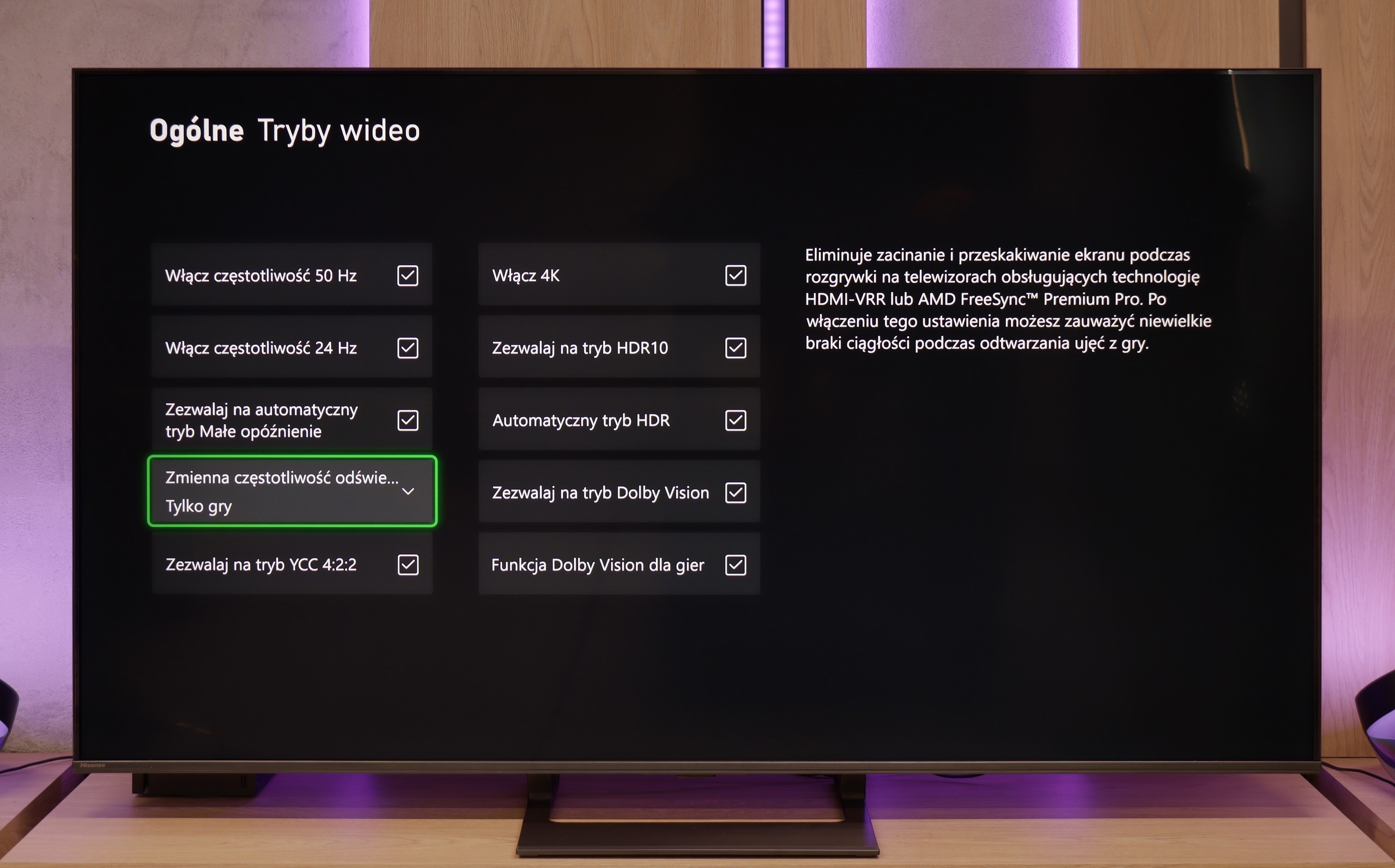

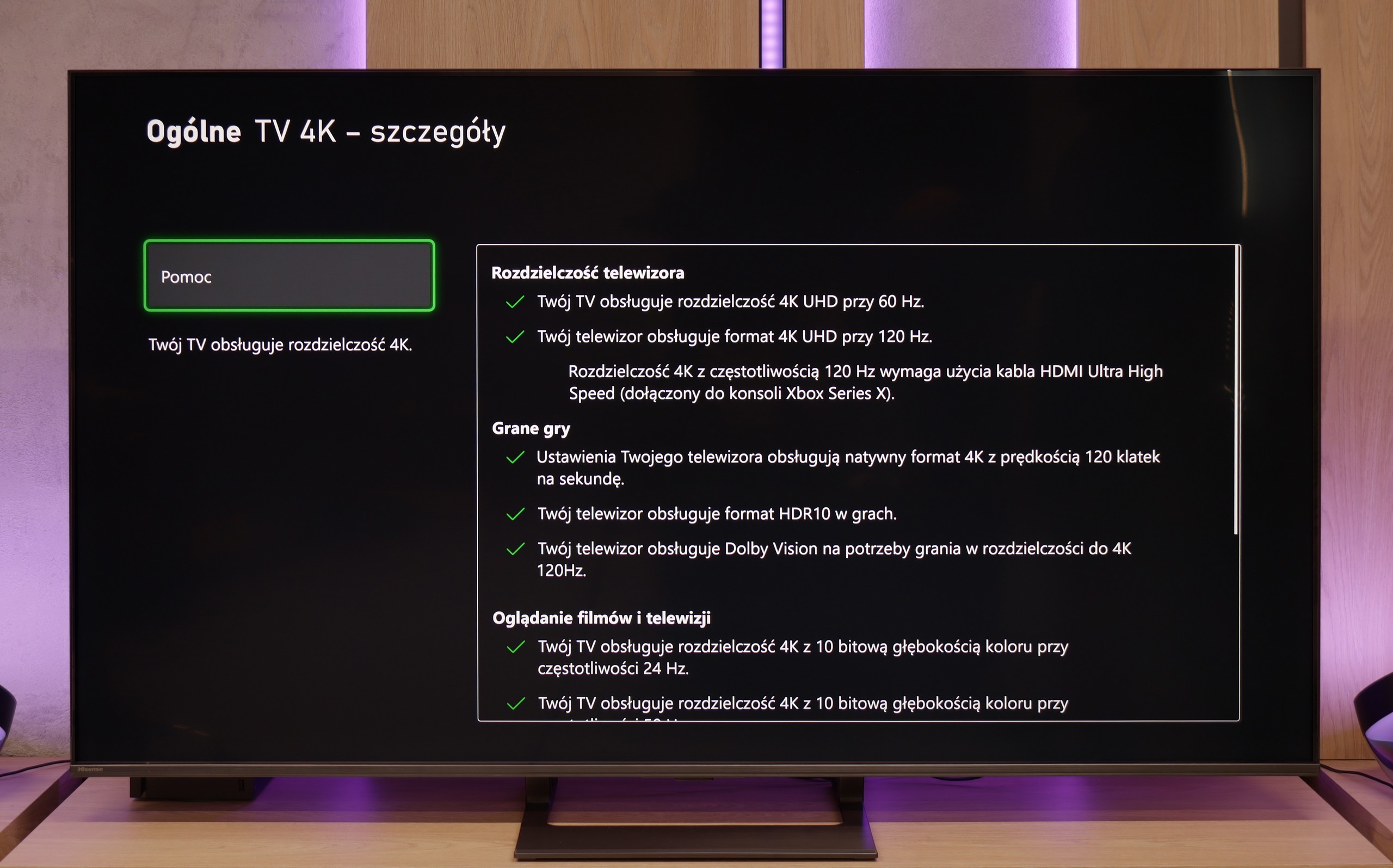

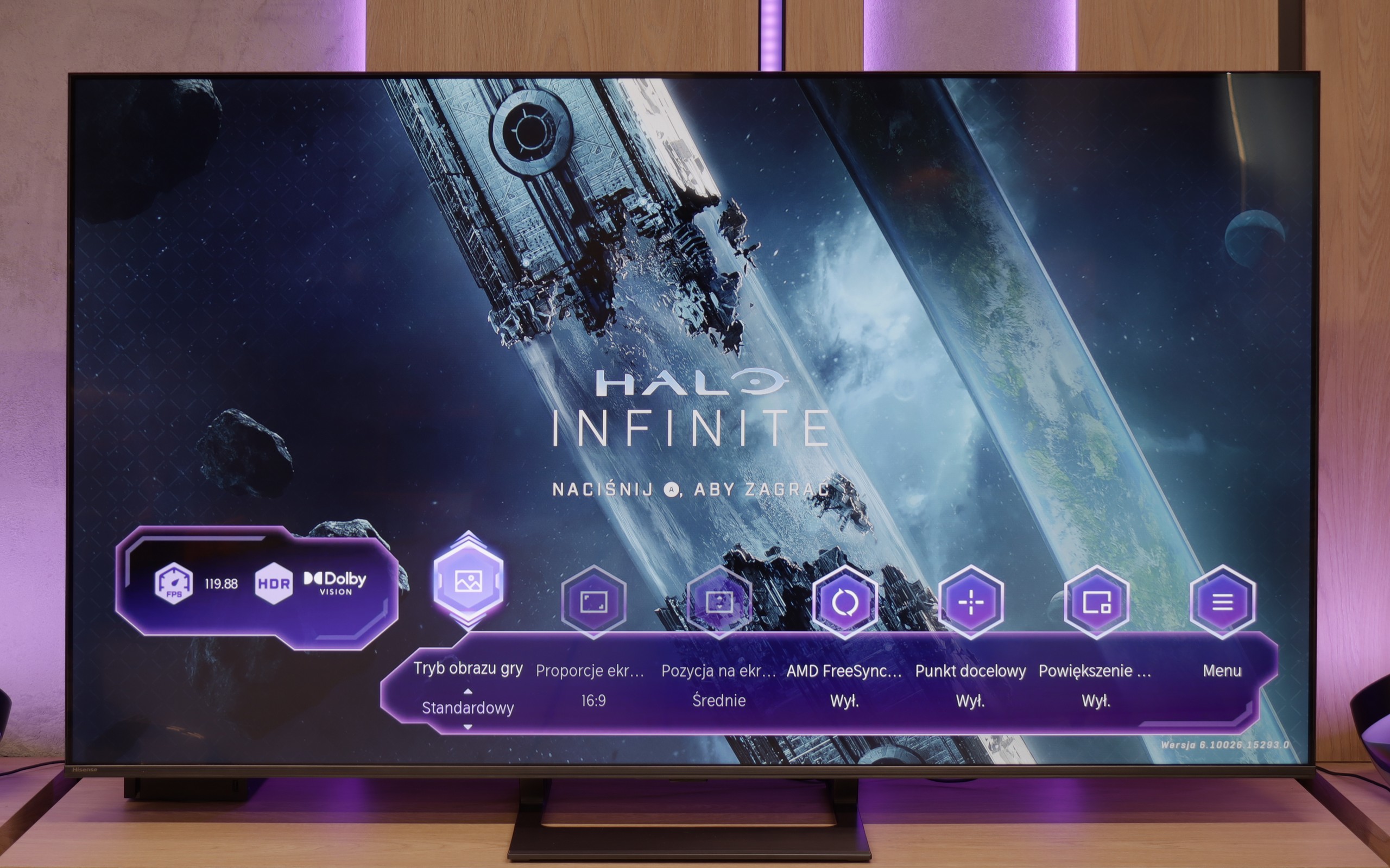

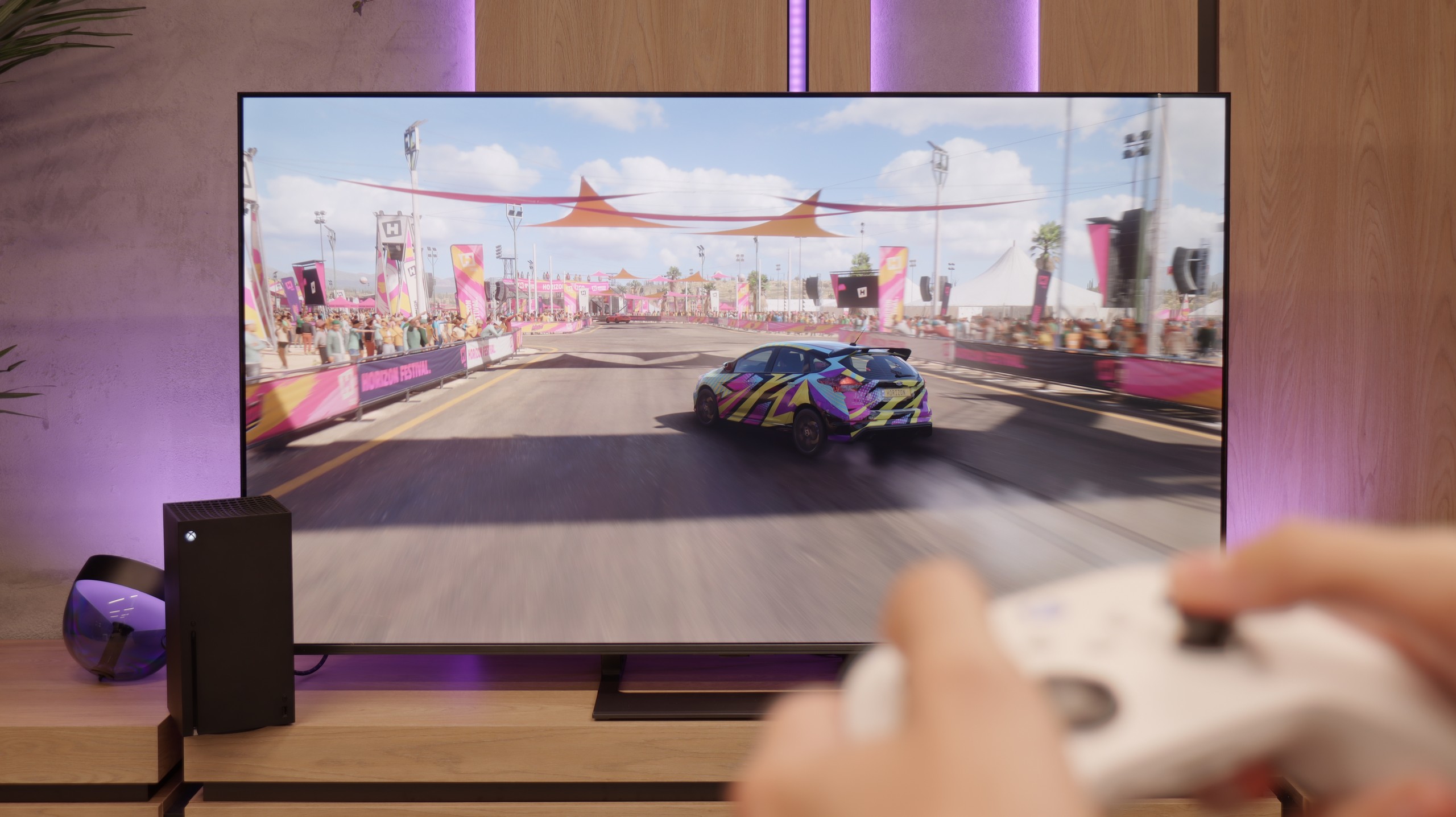

Hisense E8Q does not hide its gaming pedigree. Just the specifications reveal that we are dealing with a television that will perform excellently as a gaming screen. Variable Refresh Rate (VRR)? It's there. Automatic Game Mode switching (ALLM)? That's there too. Additionally, there's impressive refreshment – 120 Hz in 4K or even 240 Hz in Full HD. Such a set is rare in this price segment. Everything runs smoothly and without major surprises. The only missing element – similar to the U7Q – remains support for HGiG. It's a shame because this feature facilitates adjusting the brightness curve to the capabilities of the specific television, enhancing visual fidelity with the intentions of HDR game developers. Without it, manual tweaking of the settings is necessary, which does not always yield a satisfying result.
If someone is looking for a TV for gaming, the Philips OLED770 is a candidate that's hard to overlook. The mere fact that this is an OLED gives it a great starting point – perfect blacks and infinite contrast make evening sessions in atmospheric games look like they've been taken straight out of a cinema. Added to that is the Ambilight system, which uses LEDs on the back of the TV to extend the image onto the wall behind the screen. The effect is such that even just playing FIFA can look like a small spectacle, and in horror games, the atmosphere becomes really thick. On the technical side, it's also quite decent. The Philips OLED770 supports variable refresh rate (VRR) up to 120 Hz, has an automatic mode for gamers (ALLM), and for those using an Xbox Series X, Dolby Vision support in games is also available. You just need to know that in this mode, the input lag is slightly higher than standard, although still at an acceptable level. As a bonus, we also get the 'Game Bar', which is a special tool strip for gamers. It's not the most conveniently designed solution, but it allows for a quick view of key parameters without exiting the game. Overall, this gives a picture of a TV that has all the most important gaming features on one hand, and on the other can add something unique – Ambilight. And it's this mix of technology and visual effect that makes the OLED770 one of the better screens for gaming in a home environment.
Input lag
9.7/10
9.8/10
SDR
HDR
Dolby Vision
The E8Q handles delays very well. For 120 Hz content, the input lag is super low – practically imperceptible even for more demanding players. At 60 Hz, the values are slightly higher, but still comfortably within the "placebo" range – there's nothing to complain about. The biggest increase in latency was noted in Dolby Vision Gaming mode. The TV needs more time to process the signal then, but even in this scenario, it doesn't exceed 30 ms. These may not be ideal values, but for most players – especially console gamers – it won't be a problem.
As we mentioned earlier, the only anomaly that has been captured during testing is the Dolby Vision Gaming mode. In this setting, the latency can reach up to 30 ms. This is not a particularly impressive result, and more demanding players may turn up their noses, but in practice – during casual sessions – the difference will not be greatly noticeable. The standard HDR10 and SDR modes perform much better, however. In the case of a 120 Hz signal, the input lag drops to a minimal 5 ms, which is an outstanding result and places the OLED770 among the top TVs suitable for dynamic gaming. In other words, if someone isn’t set on Dolby Vision on Xbox, the gaming experience will be fast, smooth, and free of unnecessary delays!
Compatibility with PC
8.6/10
7.6/10
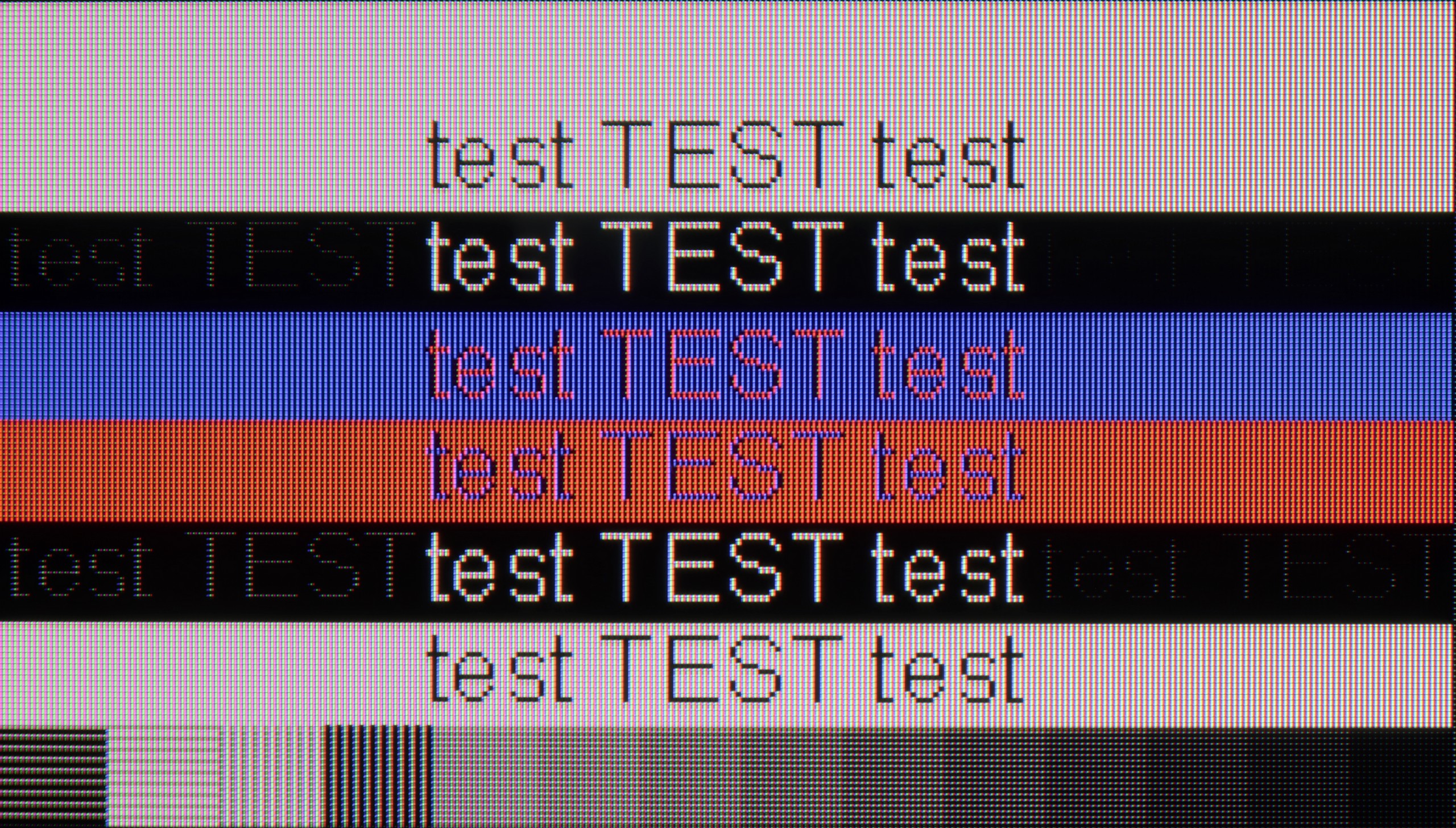

In terms of collaboration with the computer, the E8Q performs really well. It supports chroma 4:4:4 at full 4K resolution and the highest refresh rates, so the readability of fonts – even the smallest ones – is at a very good level. There are slight blurriness issues with exceptionally thin fonts, but in everyday use, it's hard to consider this a serious problem. A nice addition for PC gamers is the ability to achieve up to 288 Hz at lower resolutions. The E8Q communicates effortlessly with powerful graphics cards, making it an interesting choice not only for movies or consoles but also for gaming on the computer.
Philips has learned from previous models and has finally improved the implementation of chroma 4:4:4. This is important news for those planning to connect the TV to a computer, as it means no problems with sharpness and readability of fonts. Text looks clear and crisp, so the OLED770 can easily be called an excellent display for office work or browsing the internet. Of course, very demanding users may notice some imperfections resulting from the WRGB pixel arrangement typical of WOLED panels, but in practice, this does not significantly impact comfort. The TV also performs well in games launched from a PC. The panel allows for real refresh rates of up to 120 Hz, and with low input lag, this provides a very smooth image without noticeable stutters. The only thing missing is support for G-Sync and – as we mentioned before – a proper 144 Hz mode, but despite that, the overall performance is really solid. For those looking for a versatile screen for computer and console use, the OLED770 is a choice that’s hard to underestimate.
Viewing angles
3/10
7.7/10
E8Q, like most TVs with a VA panel, looks best when we're sitting directly in front of the screen. In this position, you can expect deep blacks, good colour saturation, and high contrast. Unfortunately, just shifting a little to the side causes the picture quality to drop – colours start to fade, and blacks become more grey than black. It's not surprising, but it's worth keeping in mind, especially if we plan to watch with a larger group from different spots in the lounge. On the bright side – in return, we get significantly better black levels than in IPS panels.
In terms of viewing angles, the Philips OLED770 presents a very high level typical of OLEDs. The image remains readable and saturated even when viewing the screen from the side – there is practically no drop in contrast or fading of colours. In this category, it only falls short of QD-OLED panels, which we find either in very expensive premium models or in one exceptional case – in the 55-inch Samsung S85F. However, in everyday use, the differences are difficult to detect, and the OLED770 performs nearly perfectly. Only at really extreme angles can a slight degradation of colours be noticed.
TV efficiency during daytime
6.2/10
4.8/10
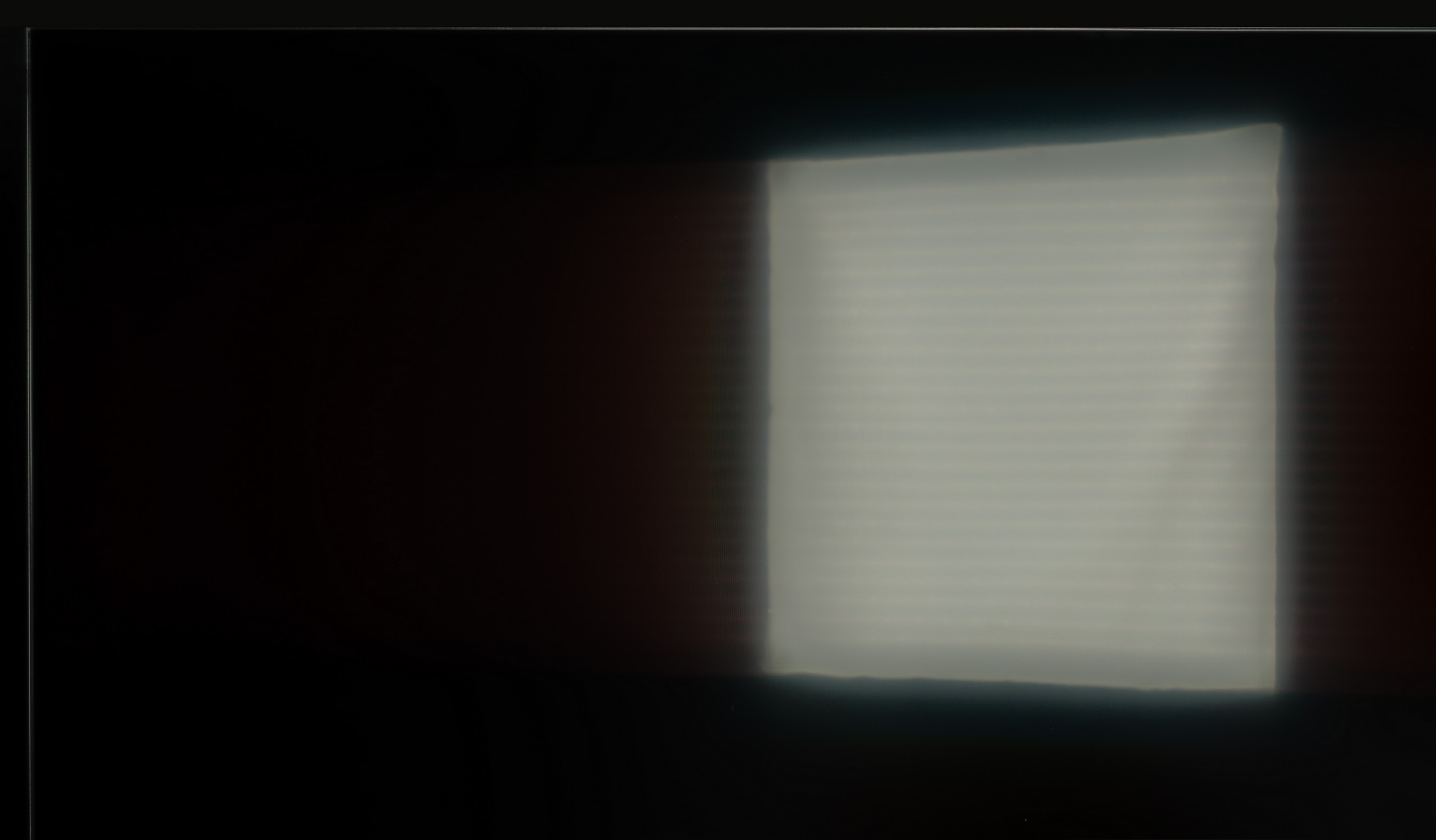



Matrix brightness
Average luminance SDR
Philips OLED770: 249 cd/m2
Hisense E8Q: 504 cd/m2
Hisense E8Q isn't afraid of bright interiors. Even when the sun is shining outside, the television can maintain good image readability. With a brightness level of around 500 nits, you can comfortably watch content during the day without feeling like everything is drowning in glare. The satin screen coating also helps to nicely minimise reflections – it doesn't completely eliminate them, but reduces them enough that they don't interfere with everyday viewing.
OLED770 is not one of the brightest TVs, so it's hard to recommend it for very sun-filled living rooms. In a bright room, its limitations quickly become apparent – the screen catches reflections and behaves more like a lightly dimmed mirror. Glare reduction is average, and in direct light, the screen performs poorly. Fortunately, the panel's coating does not distort colours, so even during the day, the hues remain natural, and the blacks do not dramatically lose their depth. Nevertheless, it’s hard to say that the OLED770 is a TV designed for bright spaces – it will definitely find a better home in a dimly lit living room or in a bedroom, where its strengths can truly shine.
Details about the matrix
Subpixel Structure:
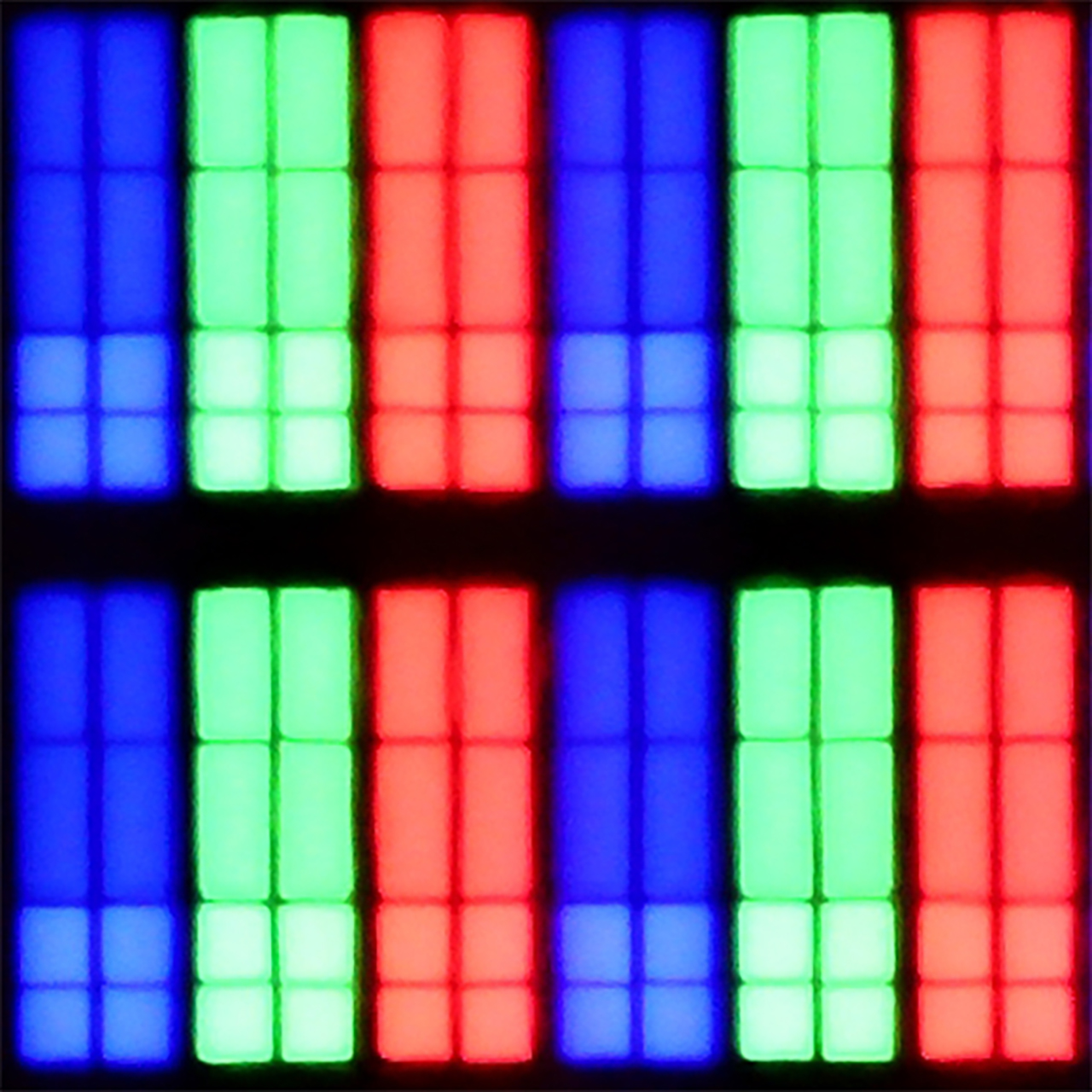

Panel uniformity and thermal imaging:


Hisense E8Q
Philips OLED770
TV features
8.9/10
5.5/10
- HDMI inputs2 x HDMI 2.0, 2 x HDMI 2.1 48Gbps0 x HDMI 2.0, 4 x HDMI 2.1 48Gbps
- Other inputsRCA (Chinch)
- OutputsToslink (Optical audio), eARC (HDMI), ARC (HDMI), Mini-Jack (Headphones)Toslink (Optical audio), eARC (HDMI), ARC (HDMI), Mini-Jack (Headphones)
- Network InterfacesWi-Fi 2.4GHz, Wi-Fi 5GHz, Ethernet (LAN) 100MbpsWi-Fi 2.4GHz, Wi-Fi 5GHz, Ethernet (LAN) 100Mbps
- TV receptionDVB-T, DVB-T2, DVB-S, DVB-S2, DVB-CDVB-T, DVB-T2, DVB-S, DVB-S2, DVB-C
Classic features:
- Recording to USB (terrestrial TV)
- Recording programming
- Picture in Picture (PiP)
- RF remote control (no need to aim at the screen)
- Backlit remote control
- Teletext
- Audio only mode
- Bluetooth headphones support
- Simultaneous Bluetooth headphones & TV audio
Smart features:
- AirPlay
- Screen mirroring (Windows Miracast)
- Voice search
- Voice search in native language
- Ability to connect a keyboard and mouse
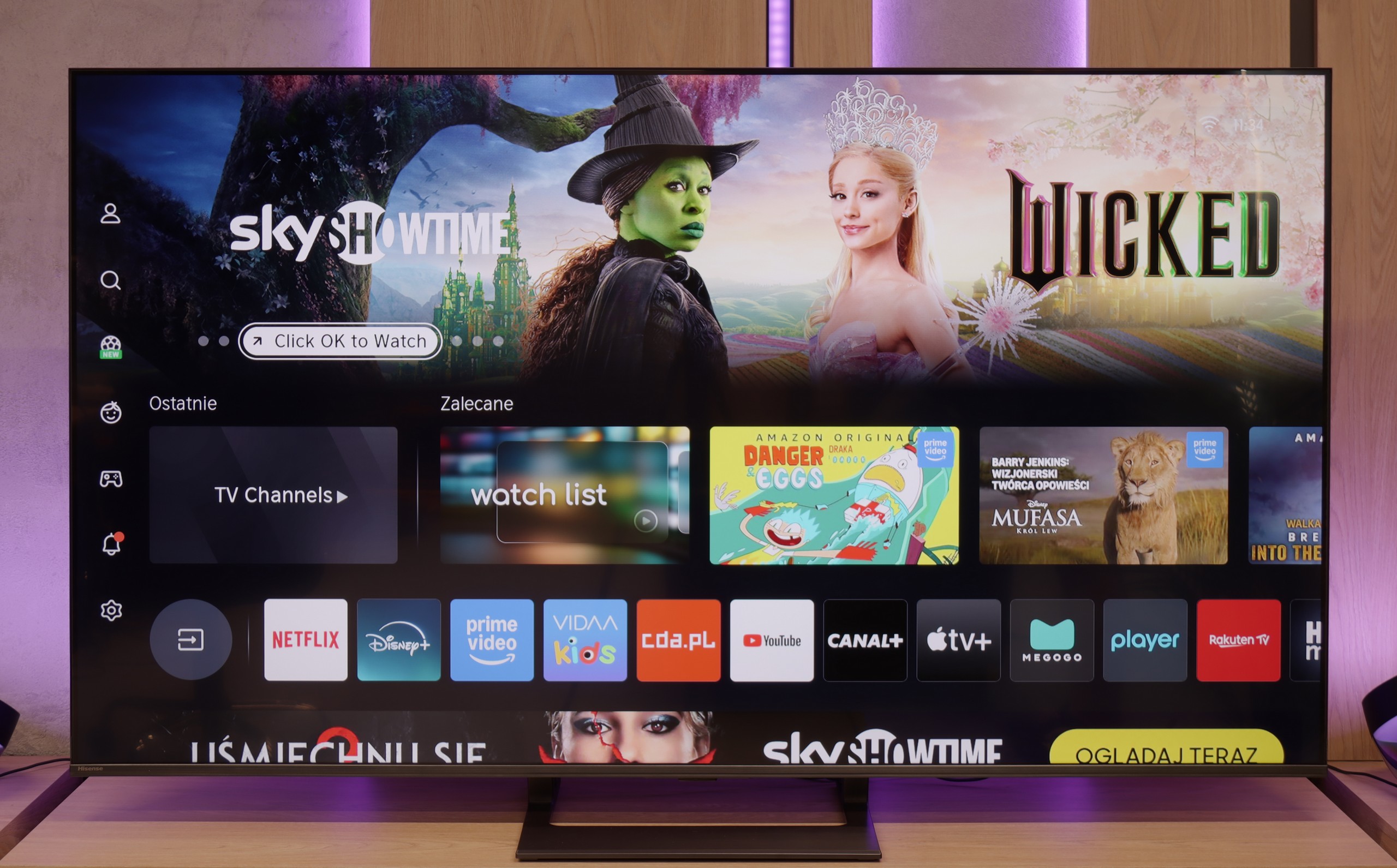
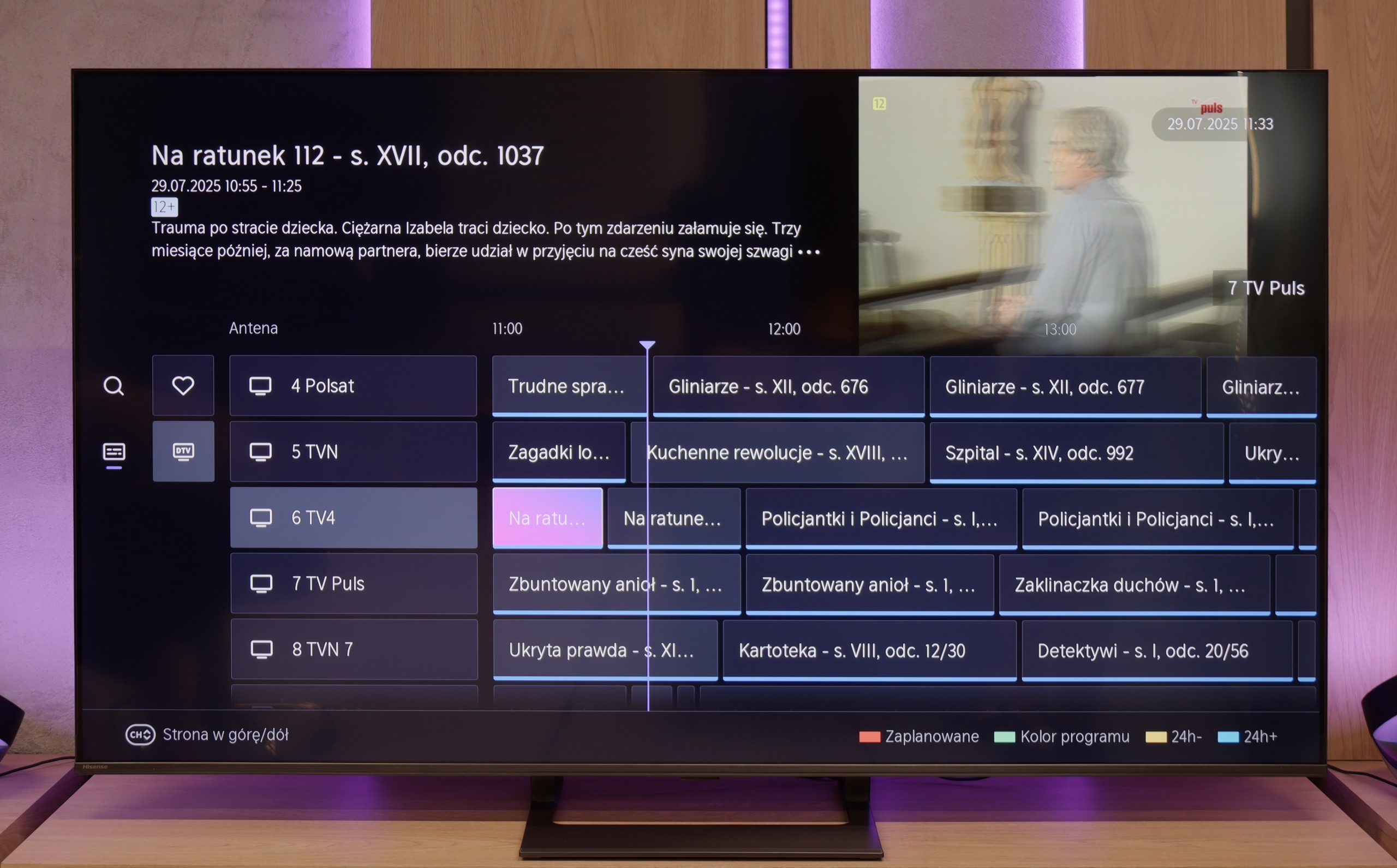
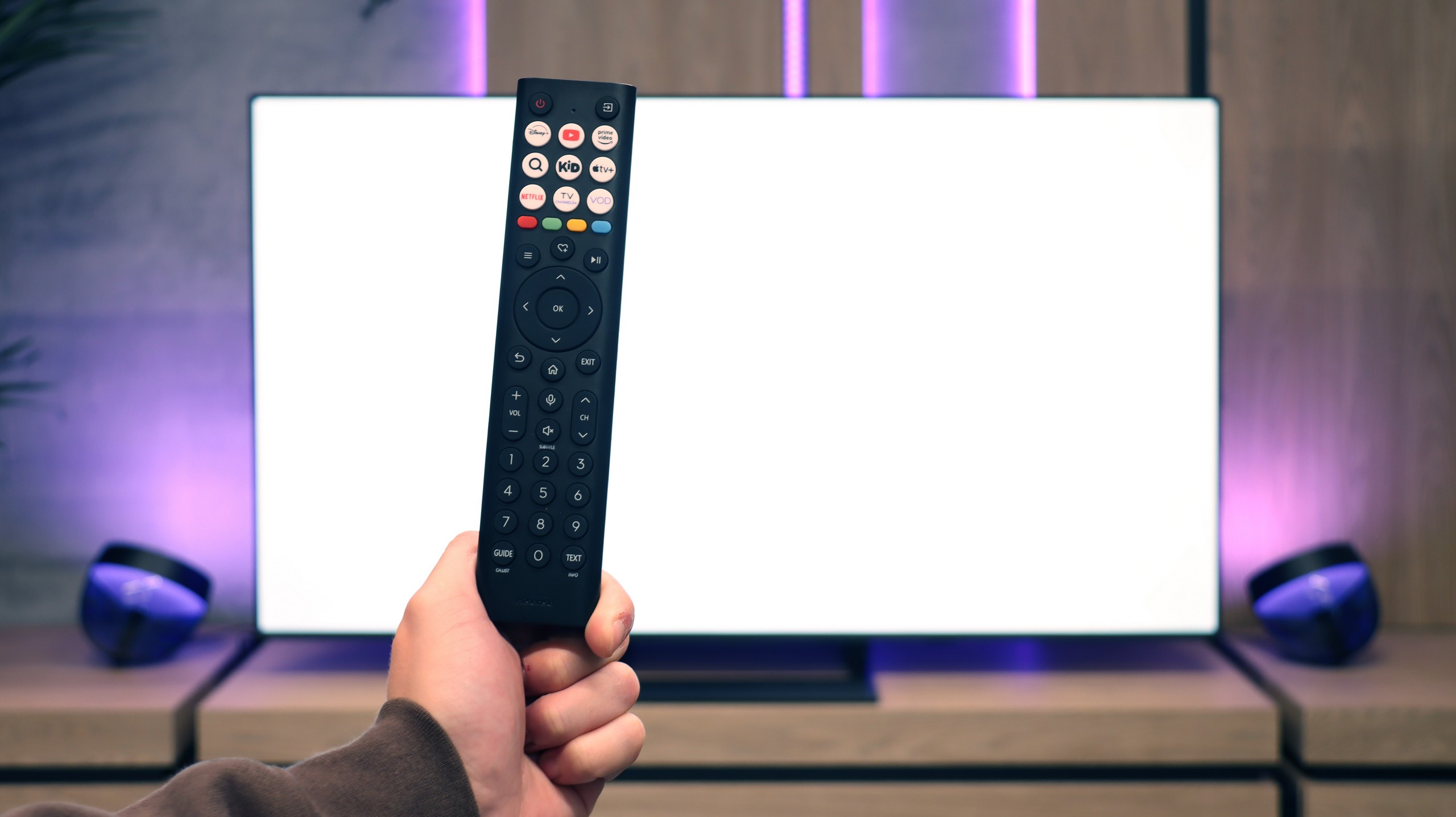





Classic Features – E8Q
The Hisense E8Q is not just equipment for gamers or movie enthusiasts – it can also serve as an everyday TV for the whole family. We can record programs to USB, connect headphones or speakers via Bluetooth, and the entire interface – including the channel guide – is clear and easy to use. It only lacks a PiP function, but besides that, the set of classic features is really complete.
Smart TV – VIDAA System
The E8Q runs on the VIDAA system, which is becoming more refined every year. Voice search in Polish works flawlessly, and it's easy to stream content from a phone (AirPlay and screen mirroring). The system itself operates smoothly, without hiccups, although – as is often the case with closed platforms – there may be one or two less popular apps missing. It’s worth checking before purchase whether it has everything we use daily.
Functional Features
Let's start with the basics, which are the classic functions of a television. The Philips OLED770 doesn’t turn the table here; we have a standard EPG interface, the ability to connect devices via Bluetooth, and a few simple configuration options including teletext. Interestingly, there is a jack connection, which is becoming quite rare these days. However, those with older receivers or wired headphones will appreciate it. The remote creates a good impression – it’s ergonomic and has a backlit numeric keypad – but there’s also a sense of a step back here. It works via infrared, so you have to aim it at the television, and frankly, by 2025 we would expect full wireless support. The exception is voice commands, which use Bluetooth, but even here there’s no reason for euphoria.
SmartTV Features – TitanOS
Speaking of voice, let’s move on to the Smart TV system, which is an element that largely defines the daily comfort of using a television today. And here the OLED770 clearly lags behind the competition. TitanOS operates quickly enough that it's not a disaster, but daily use can be frustrating due to minor bugs and shortcomings. Theoretically, we get support for AirPlay, but on the other hand, screen mirroring just didn’t work at all in practice. Voice search? Yes, but only through Amazon Alexa and without support for the Polish language. In other words, the features are there, but when we try to use them, we find that their practicality is severely limited and nearly useless. And it’s this Smart TV aspect that becomes the greatest hindrance of the OLED770. The image can be astonishing, gaming is excellent, and Ambilight creates a unique atmosphere – but when we transition to daily use of apps and services, we feel a sense of dissatisfaction.
Ambilight – Philips OLED770
Although in terms of smart functionality, the Philips OLED770 is rather average, it has something in store that its competitors honestly envy. We’re talking about the three-sided Ambilight system, which has been a hallmark of this brand’s televisions for years. The LED lights positioned at the back of the housing dynamically illuminate the wall in colours matched to whatever is happening on the screen at that moment. The effect is simple but very suggestive – the image seems to extend beyond the boundaries of the television, giving us the impression that the screen has suddenly grown by extra inches. During a movie screening, it can create atmosphere, in games it enhances immersion, and during regular TV viewing, it simply pleases the eye. It’s this addition that makes it so that despite the limitations of TitanOS, the OLED770 has something that can attract attention and give it character.
Playing files from USB
8.2/10
8.5/10
Supported photo formats:
Maximum photo resolution:
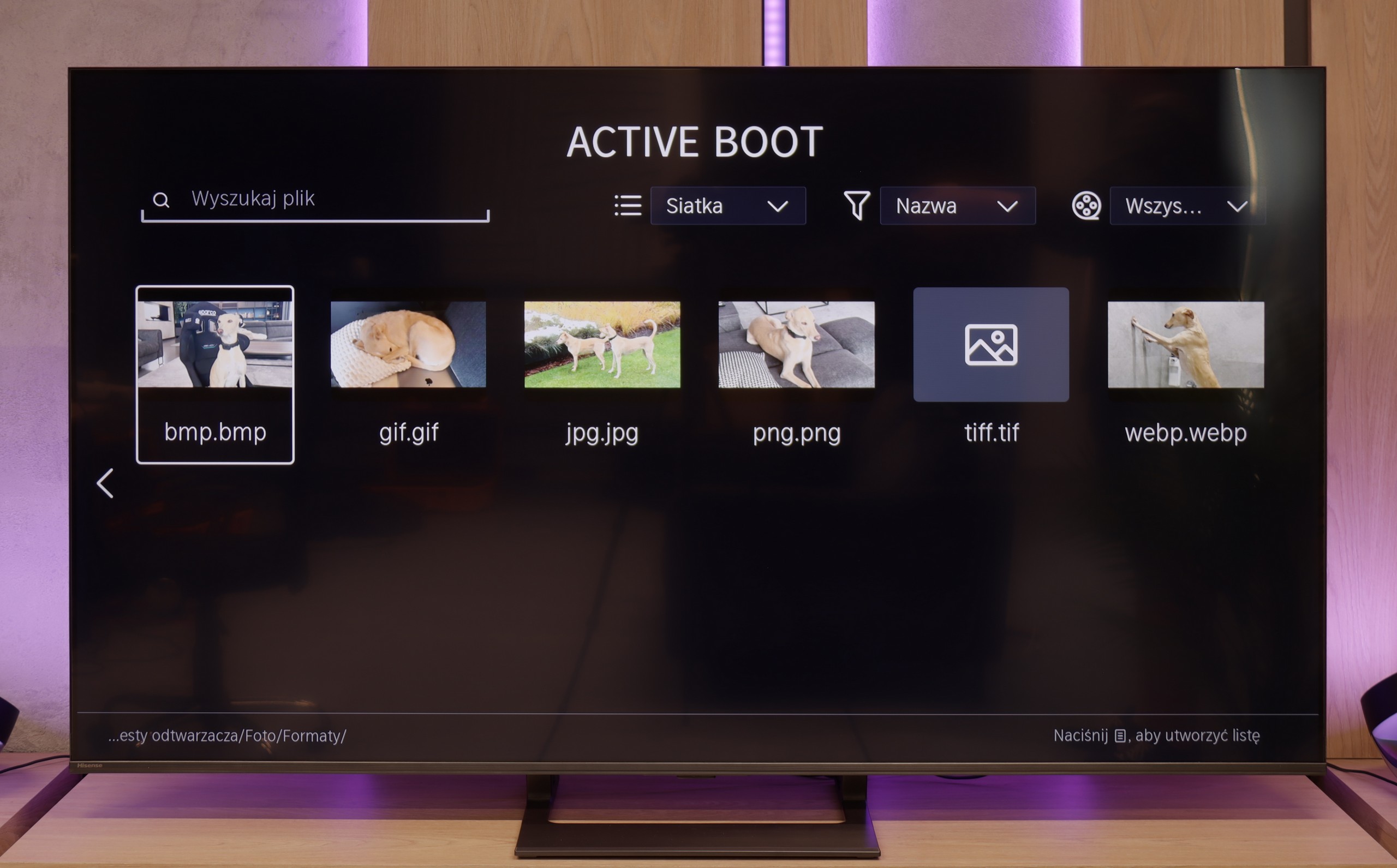

The built-in media player in the E8Q performs quite well. It supports most popular video and audio formats, and files from USB drives or external disks play without major issues. Polish characters? They're supported. Subtitles? They work. The only minor drawback is the occasional problem with displaying high-resolution images – especially those from cameras or smartphones. So if you're planning to show holiday photos on the big screen, it’s worth checking beforehand that they all load correctly from the memory of the disk or USB drive.
The built-in media player in the Philips OLED770 works quite well, especially when it comes to subtitles – virtually every format we threw at it was handled correctly, which will certainly please those watching films from their own library. However, there are certain reservations regarding photo support. Not all resolutions are recognised, which may surprise users accustomed to viewing photographs from traditional cameras or older memory cards. Apart from that, everything works correctly – it’s just worth ensuring that the TV can handle the files that we actually want to play on it.
Apps
7.7/10
6.7/10














































Sound
7.2/10
7/10
- Maximum volume85dB80dB
- Dolby Digital Plus 7.1
- Dolby True HD 7.1
- Dolby Atmos in Dolby Digital Plus (JOC)
- Dolby Atmos in Dolby True HD
- DTS:X in DTS-HD MA
- DTS-HD Master Audio
Here unfortunately, the Hisense E8Q didn’t make the best impression on us. Although on paper it has speakers with a power of 40 W (which is just a bit less than 50 W in the U7Q), in practice the difference is significant – and unfortunately not in favour of the E8Q. During testing, it quickly became clear that something wasn’t right. When the volume was turned up above 40–50%, the entire back casing began to resonate, and unpleasant crackling sounds emitted from the TV. Even during regular viewing, it was hard not to notice this, and definitely hard not to hear. In this form, it’s difficult to talk about listening comfort. We don’t rule out that it was a problem with a specific test unit, but still – it’s worth keeping this in mind. If you care about good sound, consider connecting a soundbar or… go for the U7Q, which definitely performs better.
When it comes to sound, the Philips OLED770 performs quite well, although you can't expect powerful bass. For regular TV viewing, streaming services or series, its capabilities are more than sufficient – dialogues are clear, and the overall tonal balance is at a decent level. However, when we want to feel a real punch in cinematic productions or games, it quickly becomes apparent that it lacks solid low-end response. In such a situation, a natural complement becomes an additional soundbar or audio system that will allow you to take advantage of the potential of the excellent picture.
On the plus side, versatility in handling formats must be noted. The OLED770 can manage practically all popular codecs, including Dolby Atmos, DTS:X, and Dolby TrueHD. Because of this, when connecting external audio equipment, you can expect a full sound experience, even if the built-in speakers in the TV don't make a spectacular impression.
Acoustic Measurements
85dBC (Max)
75dBC
80dBC (Max)
75dBC


